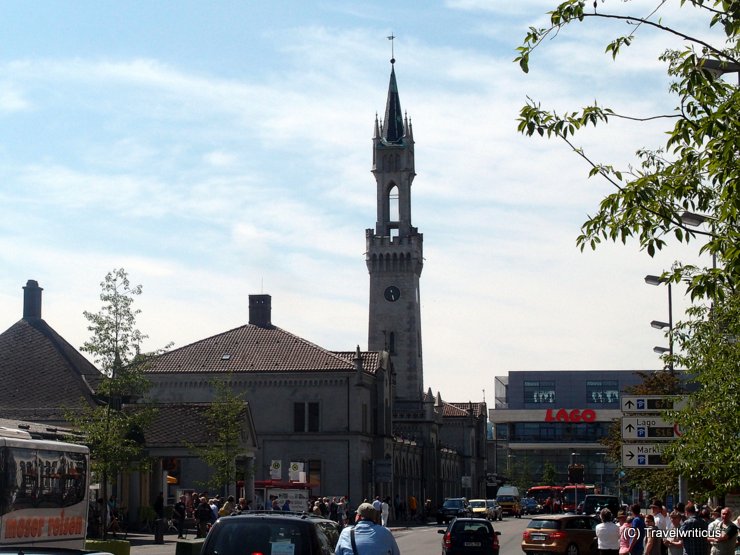
Konstanz Hauptbahnhof, the central station of Konstanz (Constance), opened to the public in 1863. The architecture consists of a mixture of neo-Gothic and Renaissance. The model for the tower was the Palazzo Vecchio in Florence. [German]
You only see what you know (Goethe)

Konstanz Hauptbahnhof, the central station of Konstanz (Constance), opened to the public in 1863. The architecture consists of a mixture of neo-Gothic and Renaissance. The model for the tower was the Palazzo Vecchio in Florence. [German]
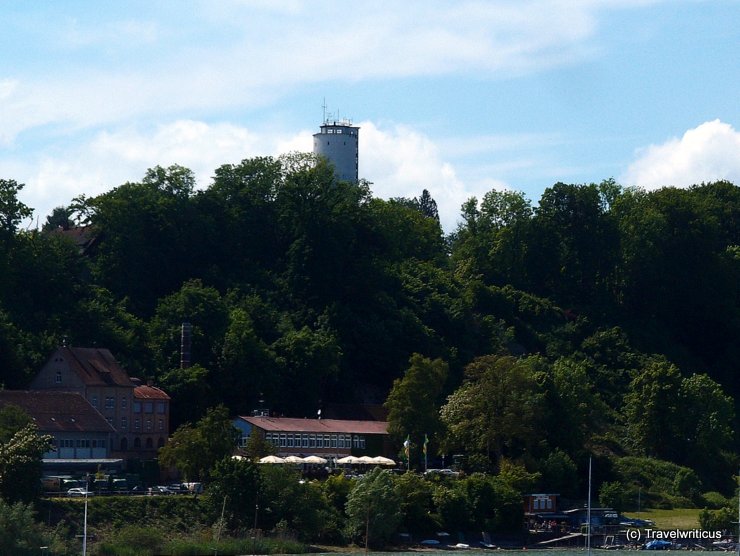
While crossing Lake Constance from Meersburg to Constance by boat, I took this photo of a conspicuous white-coloured tower named Otto-Moericke-Turm. It is a former water tower. Today, it houses a youth hostel.
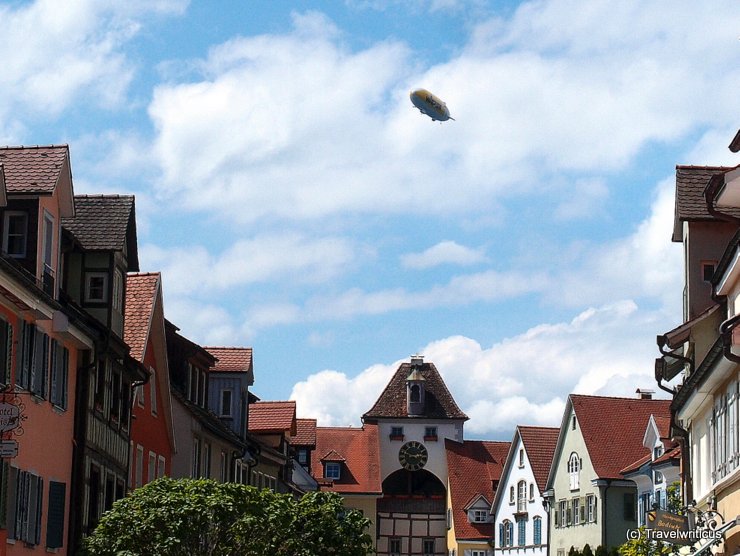
While walking through Meersburg, a modern airship suddenly appeared over the city’s roofs. I later learned that this was not an uncommon sight. Several nearby companies offer sightseeing flights over Lake Constance.
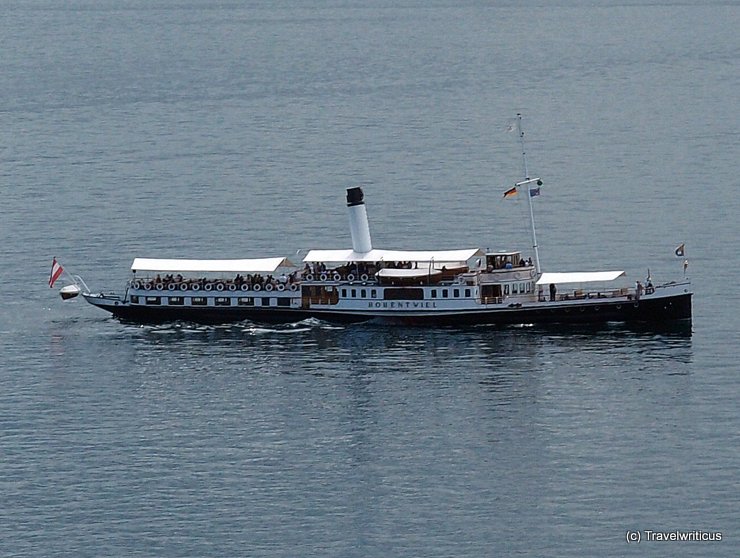
From Meersburg Castle I had this view of the Austrian paddle steamer Hohentwiel. Dating back to 1913, it is the only operational steamship and the oldest continuously operating passenger ship still in service on Lake Constance (Bodensee).
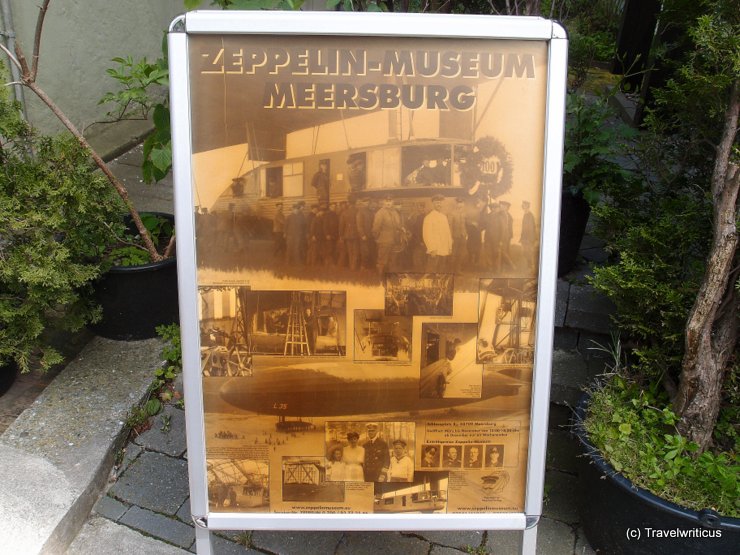
On my way to Meersburg Castle, I came across this Zeppelin museum. If one is interested in this kind of airship, this museum and the Zeppelin museum in Friedrichshafen nearby would be a good combination.
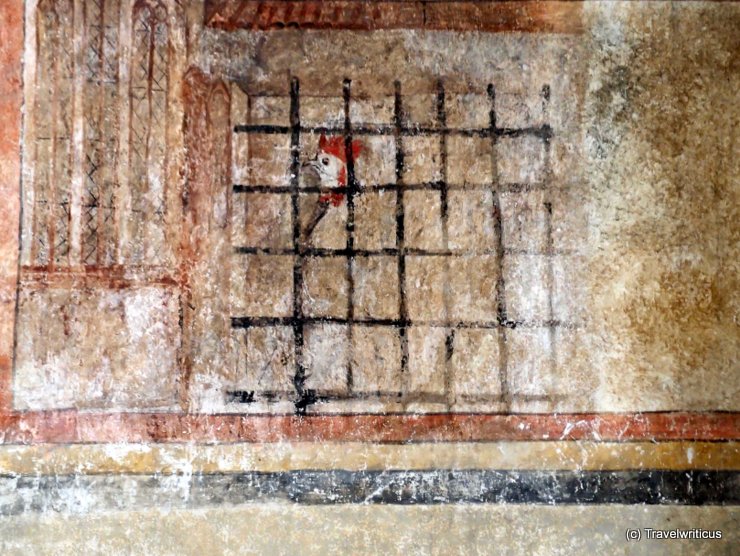
At St. Jodok Church (Pilgerkirche St. Jodokus) this depiction of a caged-up chicken made me smile. It is part of a large fresco telling a legend in Germany generally known as Hühnerwunder (chicken wonder).
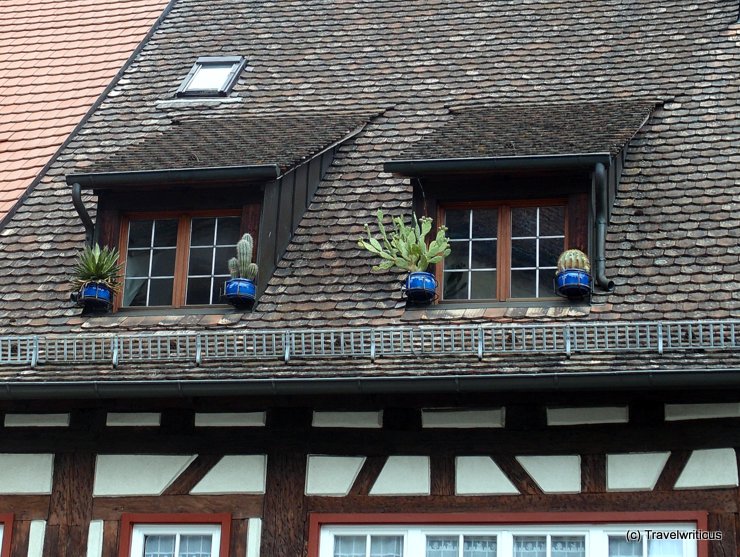
If you are fed up with colourful flowers in window boxes why not using cactus? I saw this decoration in Überlingen, a city on Lake Constance with some remarkable old buildings.
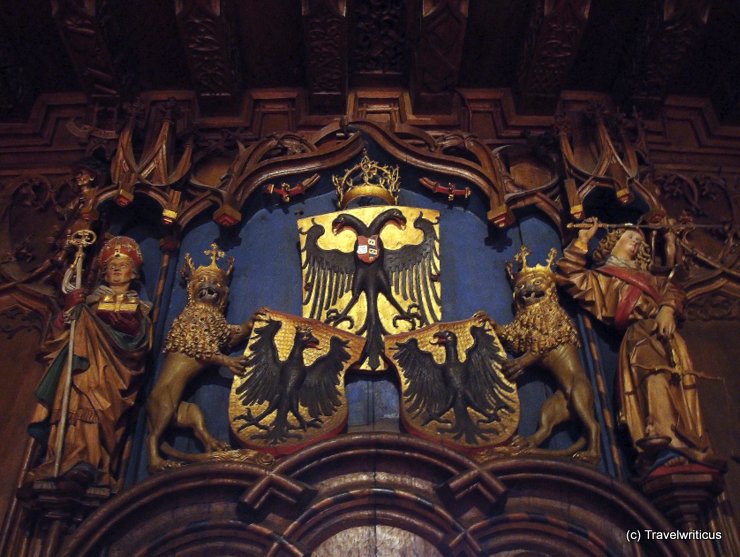
The Überlingen Council Hall, built during the Renaissance, features a remarkable cycle of limewood figures carved by master Jakob Ruß. These sculptures depict the hierarchy of the imperial estates, from princes to peasants, offering an impression of the than power structure.
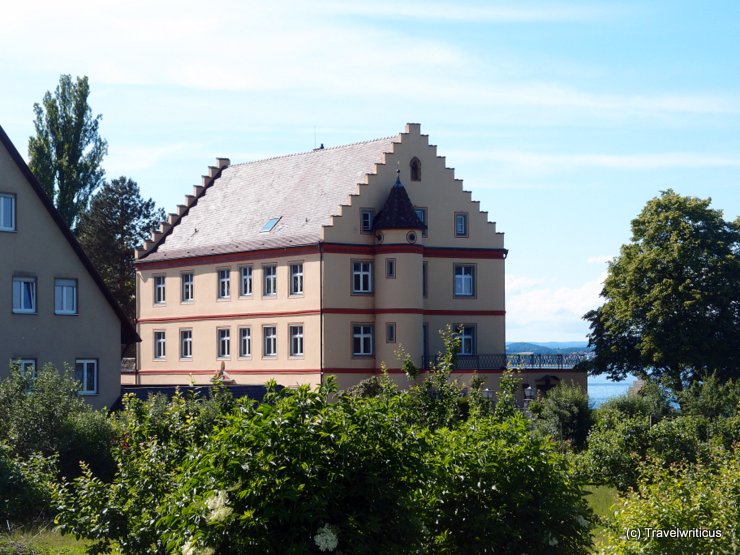
Windegg Mansion (Schloss Windegg) also known as the ‘Bürgle‘ was founded in 14th century as a guesthouse for a nearby abbey. There is a rumor that Pope Martin V stayed here for some time after his election in 1417 at the Council of Constance.
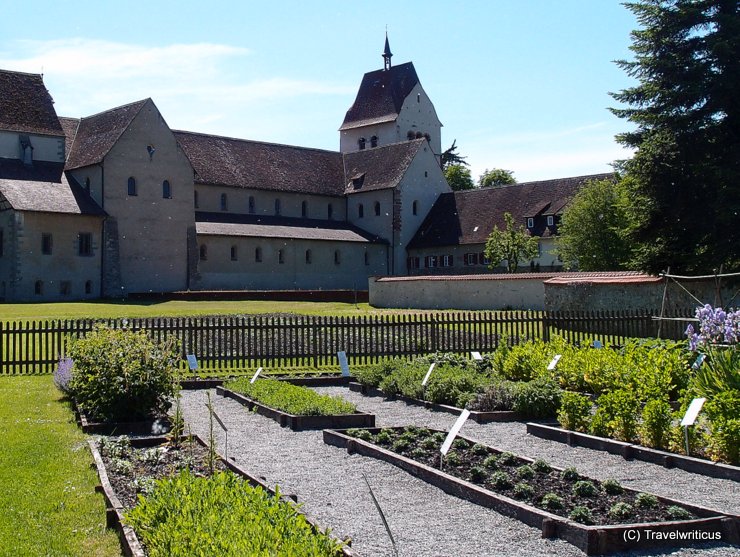
This garden seen next to the minster of Mittelzell is a reconstruction of the herb garden which was mentioned in the poem ‘De cultura hortorum‘ written by Walafrid Strabo in the years between 830 and 840.
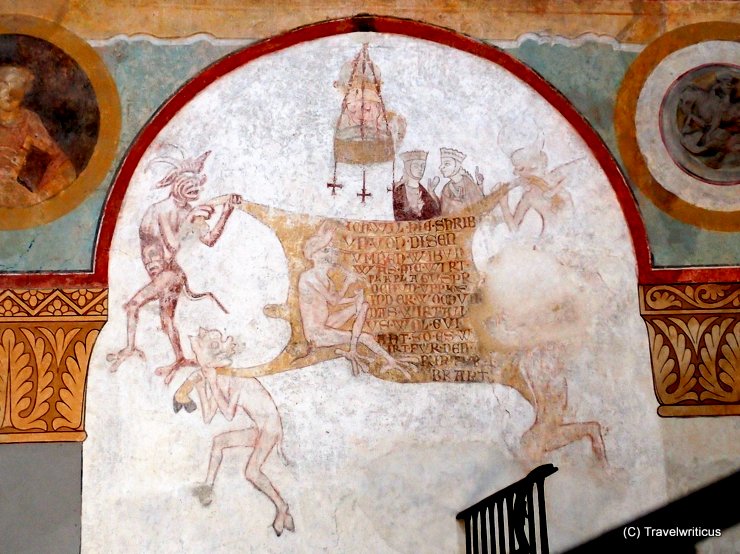
Inside St George’s Basilica on Reichenau Island there is a very special 14th century fresco. A devil is writing something on a cowhide hold by four devils. This is a reference to the German saying Das geht auf keine Kuhhaut (That doesn’t fit on a cowhide).
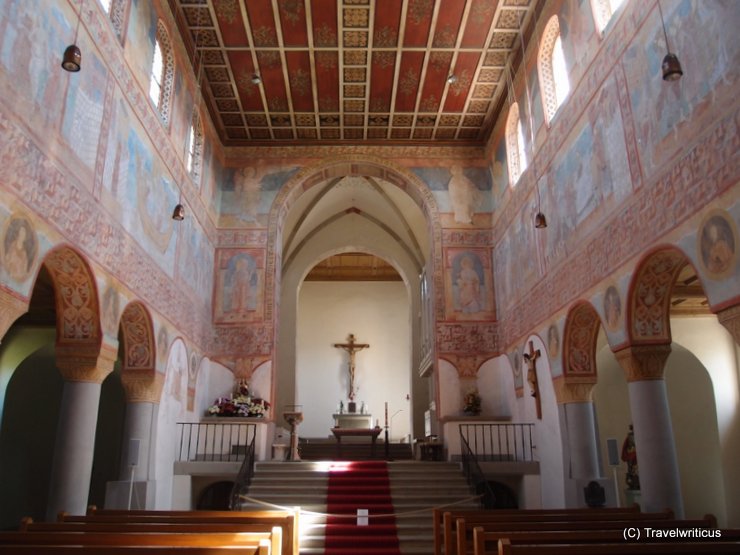
At St George’s Basilica I had the change to see some frescoes showing scenes of Jesus Christ’s life described in the bible. Though I had always thought they were of Ottonian period I was told they were created even earlier, so they are considered late Carolingian (9th century).